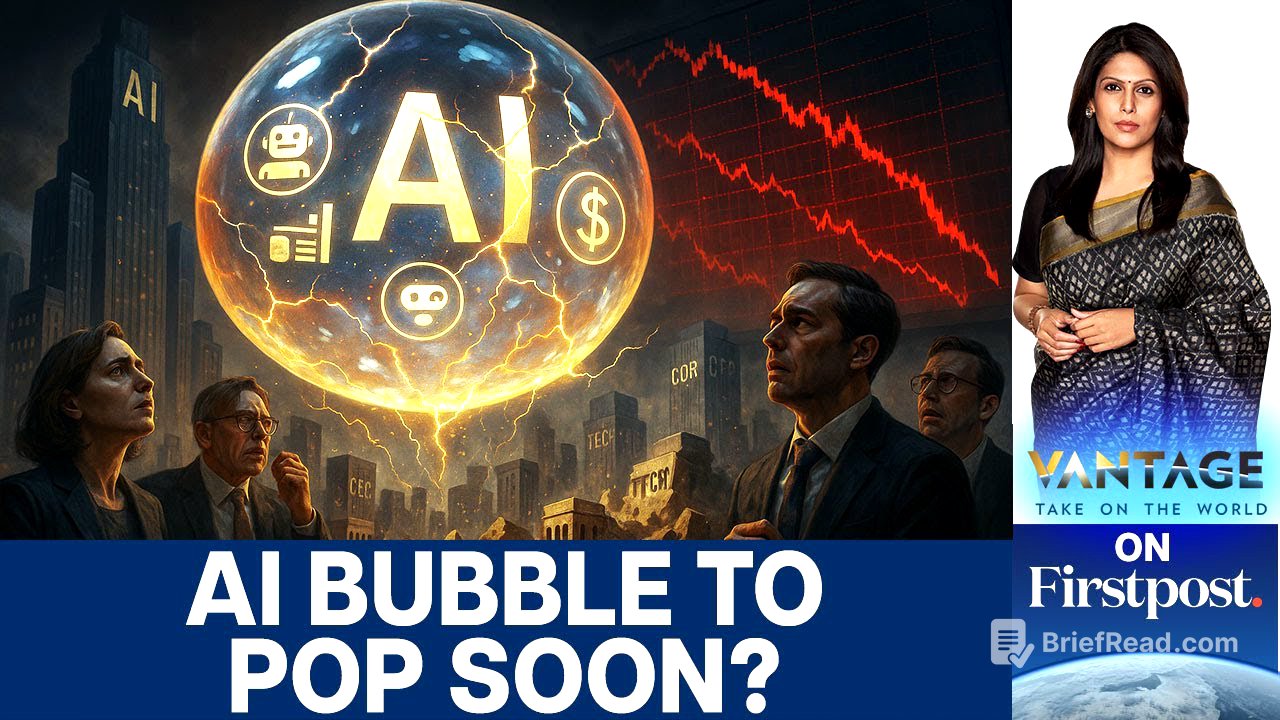TLDR;
The video discusses the current state of artificial intelligence (AI) in the corporate world, highlighting the gap between hype and reality. It points out that many AI initiatives fail to generate meaningful revenue, with a significant percentage of enterprise AI pilots not delivering expected results. The video also touches upon the importance of focusing on back-office automation for real ROI and draws parallels between the AI bubble and the dot-com boom, suggesting that while AI holds immense potential, current expectations may be overblown.
- A large percentage of enterprise AI pilots fail to deliver meaningful revenue impact.
- Companies that buy specialized AI tools are more successful than those building their own.
- AI's real ROI lies in back-office automation, not just sales and marketing gimmicks.
- The AI boom shares similarities with the dot-com bubble, with a kernel of truth amidst the hype.
- Open AI is yet to become profitable.
AI's Golden Goose or Expensive Pigeon? [0:04]
The video starts by questioning the perception of artificial intelligence (AI) as a guaranteed success for businesses. It challenges the idea that generative AI can effortlessly handle tasks like email writing and customer service, suggesting that the reality is far from the initial hype. An MIT study is cited, revealing that a staggering 95% of enterprise AI pilots fail to produce any significant revenue impact, painting a picture of AI struggling to meet the lofty expectations set by Silicon Valley.
The AI Hype Cycle and Its Discontents [0:42]
The video talks about how the hype around AI is moving faster than the actual product development and market fit. Companies are rushing to adopt new AI models from the likes of OpenAI and Google, leading to widespread AI pivots within organizations. However, this rush often results in only a small percentage (around 5%) of AI pilots actually boosting revenues in a measurable way, leaving many companies with impressive-looking dashboards but stagnant bottom lines.
Build vs. Buy: The AI Tool Dilemma [1:19]
The video highlights that companies that opt to buy specialized AI tools are twice as likely to succeed compared to those attempting to build their own. Despite this, many CEOs prefer to develop internal AI solutions, leading to numerous internal projects stuck in perpetual beta testing. By the time these systems are functional, newer versions of AI models like GPT have already been released, rendering the enterprise tools obsolete even before deployment.
The ROI Reality: Back Office vs. Gimmicks [1:46]
The video reveals that a significant portion of corporate AI budgets is being allocated to sales and marketing gimmicks, such as AI email writers and lead generators. However, the real return on investment (ROI) lies in back-office automation, which involves streamlining operations and reducing grunt work. While the math clearly favors back-office applications, companies often prioritize visually appealing dashboards over practical solutions.
Is AI a Bubble? Echoes of the Dot-Com Era [2:21]
The video addresses the question of whether artificial intelligence is currently in a bubble. Quoting OpenAI CEO Sam Altman, it acknowledges that there is indeed a bubble, but one built around a "kernel of truth." Drawing parallels with the dot-com boom, the video notes that while the internet did bring about significant changes, not all companies from that era became successful (e.g., Pets.com vs. Amazon). The AI cycle exhibits similar patterns, with massive investments in data centers and startups, but also a mismatch between investor expectations and real-world adoption.
The Stretched Bubble: OpenAI's Example [3:48]
The video uses OpenAI as a prime example of the current AI bubble, pointing out that the company is yet to achieve profitability. This fact underscores the overvaluation and inflated expectations surrounding AI. The video concludes by suggesting that the AI bubble is stretching and that such stretched bubbles rarely deflate gently, implying a potential correction in the AI market.









